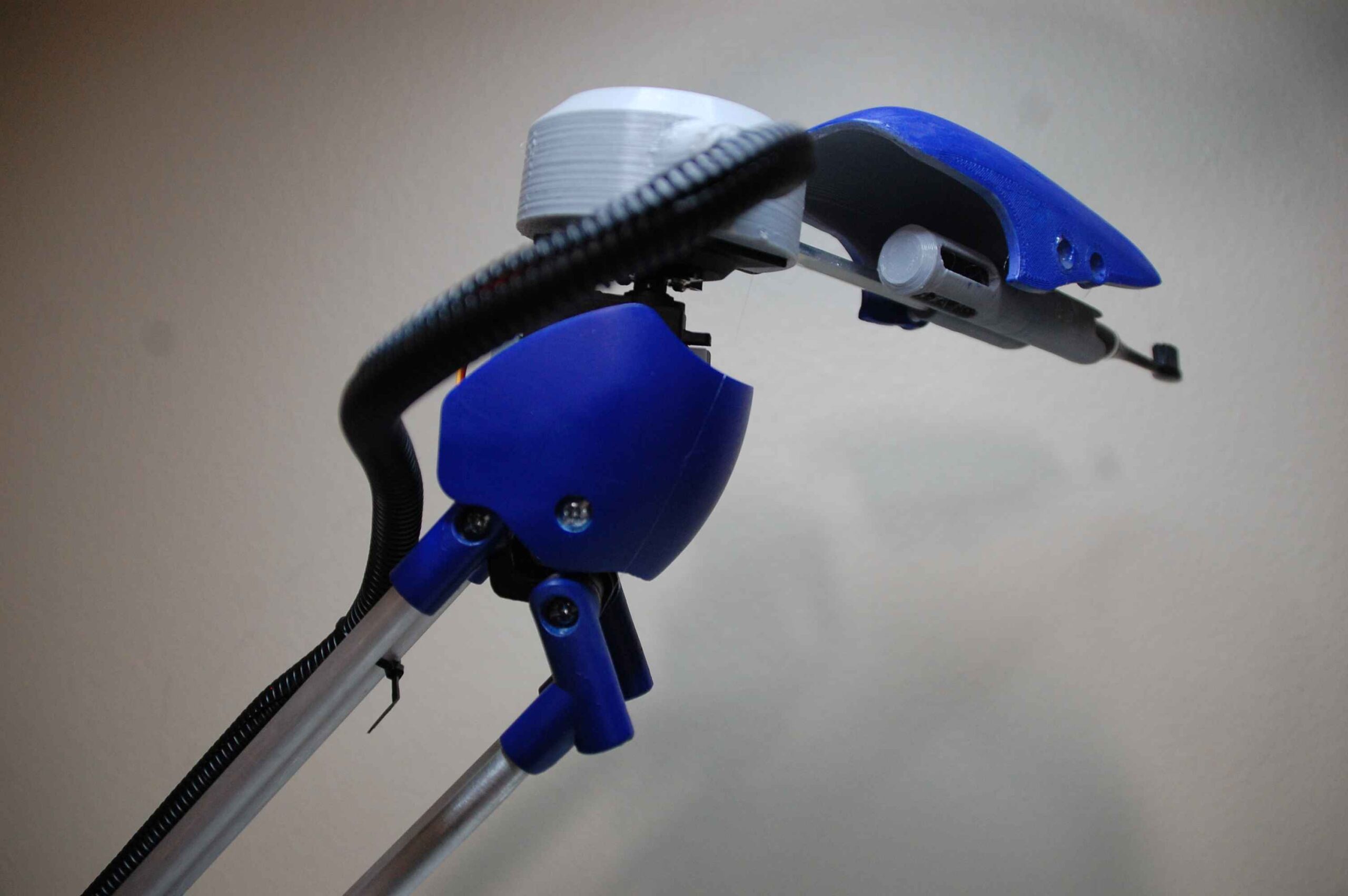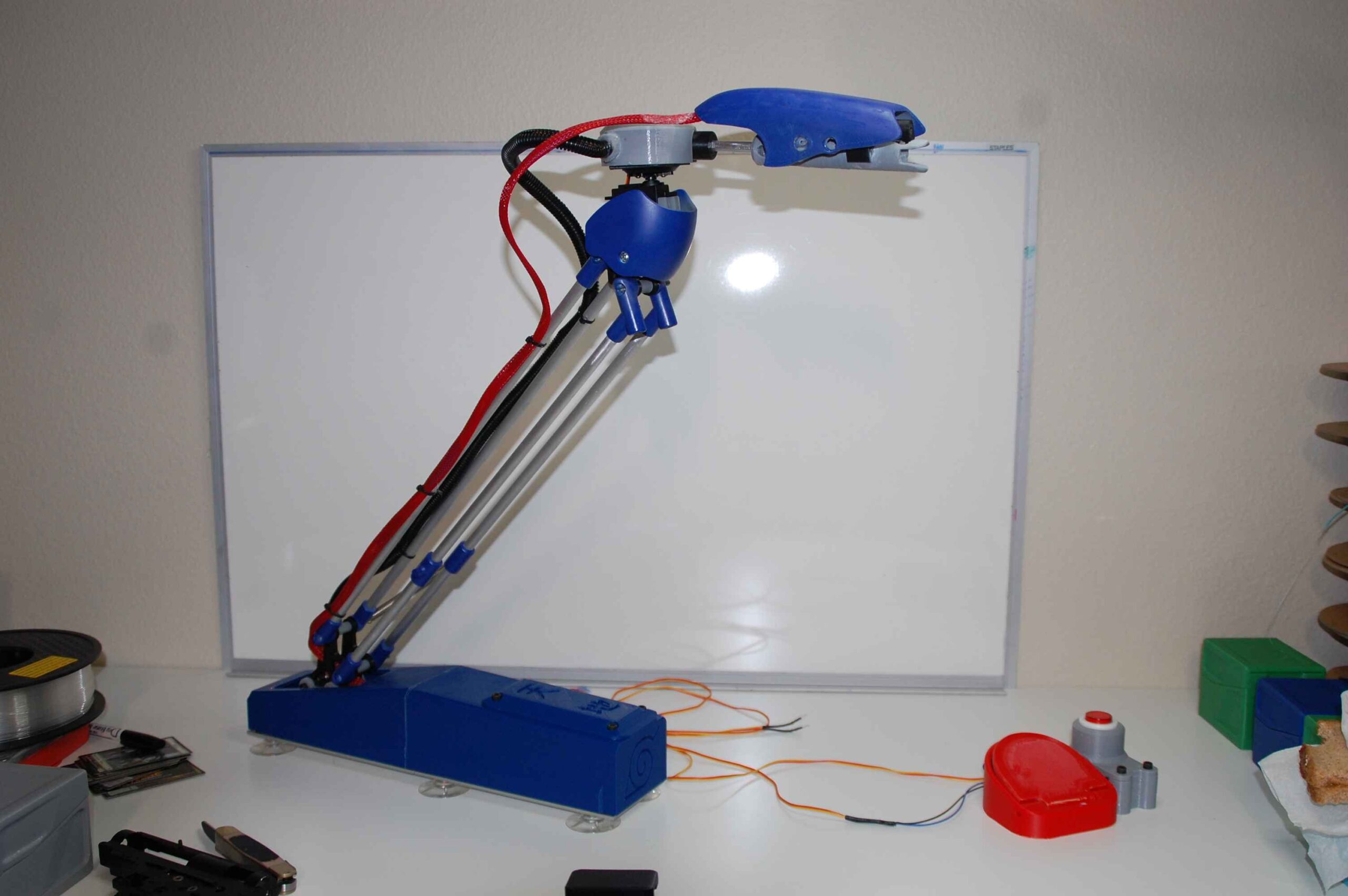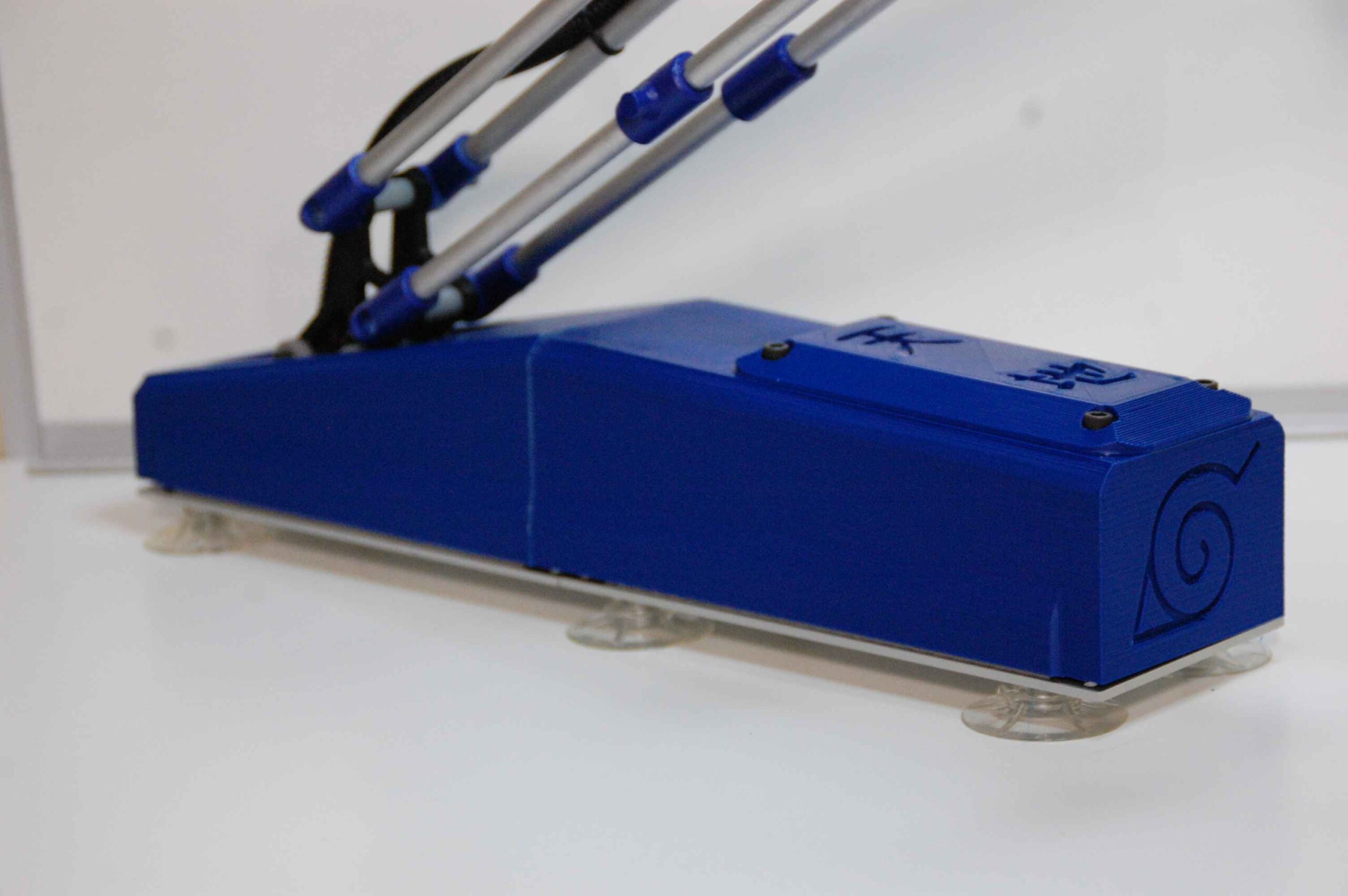This 3D printed Commander Deck box was designed to allow the user to the box with one hand.

The Toothbrush Holder Robot V1 was designed to be used by people who had no motor function in their upper body. The red paddle and on/off button was to be used by their foot to change the direction of the brush as they brush their teeth. Height adjustment was achieved by having an assistant loosen the tension knobs and adjust accordingly then tighten down to maintain the height.



The Toothbrush Holder Robot V1 was rooted in a commitment to dignity through independence. Recognizing the challenges faced by individuals with limited upper-body mobility, the design prioritized intuitive, hands-free operation to empower users to perform a daily task—brushing their teeth—without relying on constant assistance. The foot-activated controls (red paddle and button) were intentionally placed to align with natural lower-body movements, minimizing strain while maximizing autonomy. While height adjustments require caregiver support, the tension knob system was simplified to ensure quick, tool-free modifications, striking a balance between user independence and practical assistance. Every component was crafted to reduce frustration and foster self-reliance, embodying the principle that adaptive technology should adapt to the user—not the other way around.
The robot’s design integrates several thoughtful features tailored to its audience:

By addressing both user and caregiver needs, the design transforms a routine task into an accessible, stress-free experience.
The project evolved through close collaboration with occupational therapists, caregivers, and individuals with motor impairments. Prototypes were tested in real-world scenarios, with feedback directly shaping the final product. For example:

This iterative process ensured the robot not only met functional requirements but also resonated emotionally with its users, fostering a sense of agency in their daily lives. Future iterations aim to integrate voice-activated controls and automated height adjustments, further reducing reliance on assistants.
This 3D printed Commander Deck box was designed to allow the user to the box with one hand.
A novel loader for airsoft gas blowbacks that make loading the typically difficult to load magazines easier.
A prototype designed to be collapsible for easy deployment and storage.
An assembly that held bottles for UV printing and rotated them to allow printing on all four sides of the bottle.